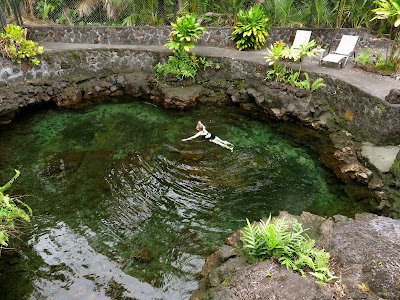 |
| My sister (lower left) outside Lancaster's Central Market on a cloudy November morning. |
Farmer's markets are all the rage. Every city and town seems to be vying for the title of Coolest 21st Century Farmer's Market, describing themselves with adjectives such as "organic" "original" and "artisan". But how about an authentic 18th Century Market?
Central Market in Lancaster, Pennsylvania is the hands-down winner in all of the above categories, providing market-goers with the bona-fide farmer's market experience in the same location for a remarkable 288 years.
Here is how Wikipedia defines Central Market:
A public marketplace was deeded on this site in 1730 as part of the settlement of Lancaster. The marketplace was officially chartered by King George II on May 1, 1742, officially designating Lancaster as a market town. The Central Market occupies a portion of the original marketplace, with the first permanent building erected in 1757.
You can't beat a farmer's market chartered by King George II. And you can't beat the shopping at Lancaster's Central Market for all your holiday culinary needs. The photos below provide a mouth-watering taste of Central Market's offerings.
 |
| Need celery? This stand has you covered. |
 |
| Gotta have a fresh turkey for your holiday table. |
 |
| Don't forget the baked goods. |
 |
| There's always room for whoopie pies! |
Has this post whetted your appetite for old-fashioned country cooking? If so, get out there and patronize a local farmer's market—even if it's one that hasn't been around for almost three centuries.

















































